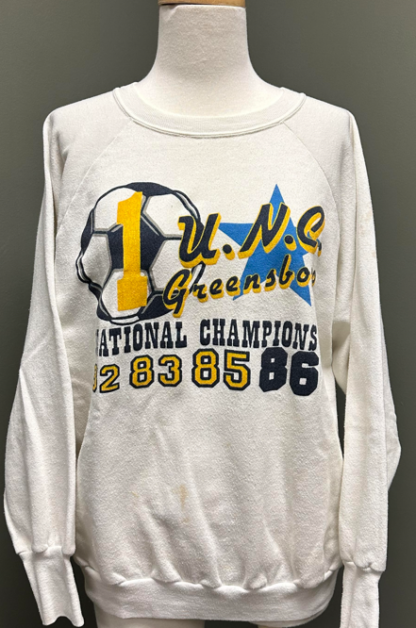Rare Books
Invisible Man / Ralph Ellison
Invisible Man, Ralph Ellison’s first novel, is one of the post-Harlem Renaissance African-American novels that have entered “the Western Canon” as acknowledged classics. Special Collections’ copy is the first edition, complete with dustjacket.
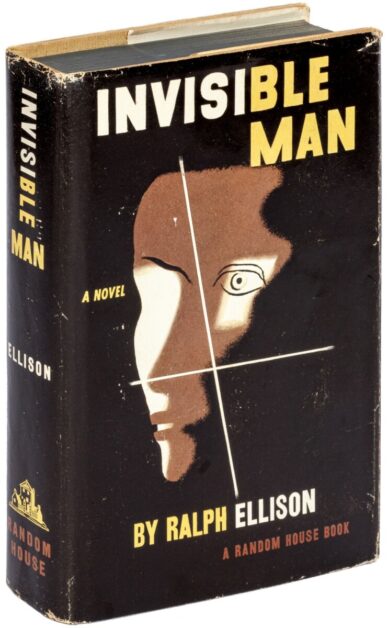
A Date with a Dish / Freda DeKnight
Written by Freda DeKnight, Ebony‘s food editor, A Date With A Dish is credited with inspiring a generation of cooks, serving as a cultural guide, and shaping Black culinary history. The recipes contained within span from Haiti to Trinidad to California to Mississippi, capturing the diversity within the Black palate and experience.
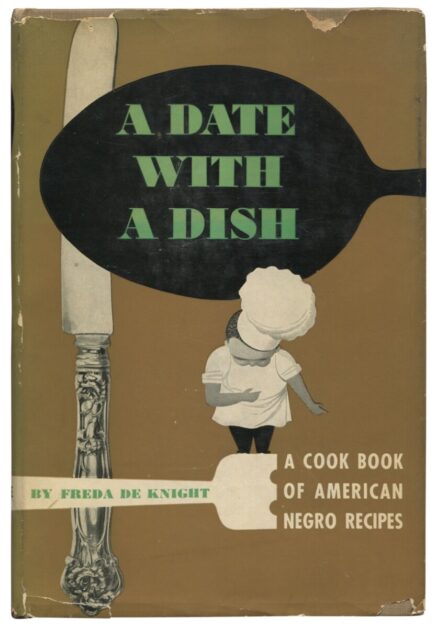
A Morality Tale for Children: The African Woman
An effective morality tale about race discrimination. “Little Mary” is depicted sitting at the window with her mother, watching “a poor old African woman go by.” Mary comments: “I do not love that woman at all! … Because she is black; I do not like anybody that is black.” Her mother scolds her: “I am sorry to hear you talk so. It is foolish, it is wicked,” and proceeds to invite the woman into their house and introduces her to Mary. Mary is embarrassed by her comments when she learns how kind the woman is, and concludes: “I will not hate black people any more.” Her mother comments: “All men and women are made of one blood … This poor African woman was brought to America when she was young. Now she is old and very poor.” When Mary later gets sick, the African woman stops in and nurses Mary for seven days and nights, until she is well, and Mary vowed: “I will never hate anybody for having dark skin. Poor Patty is a great deal better than I am.” An uncommon early tract on the subject of race relations in America.
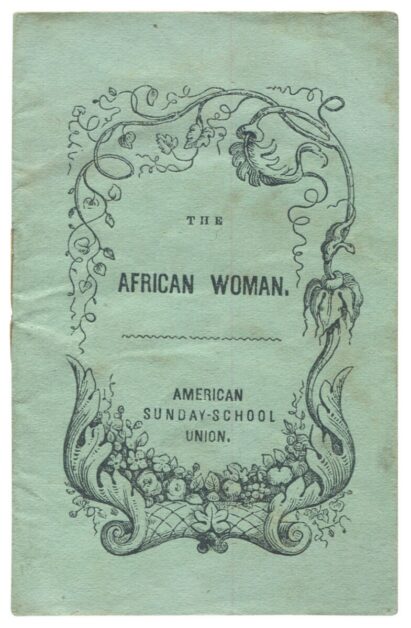
Roots : The Saga of an American Family / Alex Haley
The groundbreaking book which pioneered mainstream interest in African-American genealogy and culture. The landmark television dramatization was watched by over 100 million people and remains a highpoint in the medium’s history. Roots was awarded a special Pulitzer Prize in 1977 and it remains a key testament to the evolution of the African-American experience. Special Collections’ copy is nicely inscribed in the year of publication.
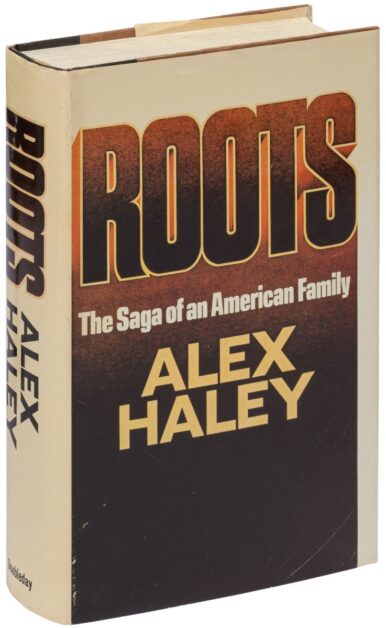
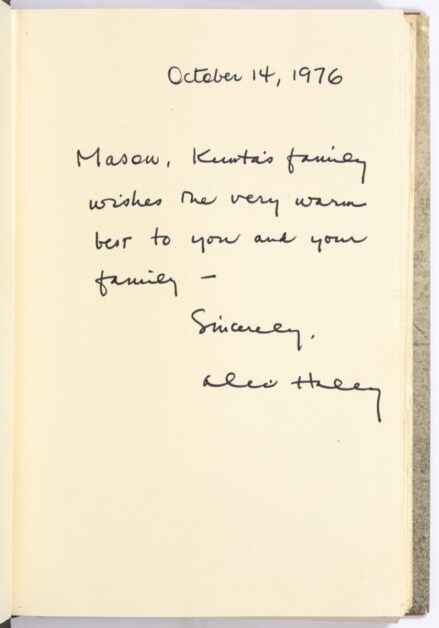
Haley, Alex. Roots : The Saga of an American Family. Garden City : Doubleday. 1976.
The Penitential Tyrant; or, Slave Trader Reformed: A Pathetic Poem, in Four Cantos … The Second Edition, Enlarged / Thomas Branagan
Early American Illustrated Abolitionist Work Intended for Youth
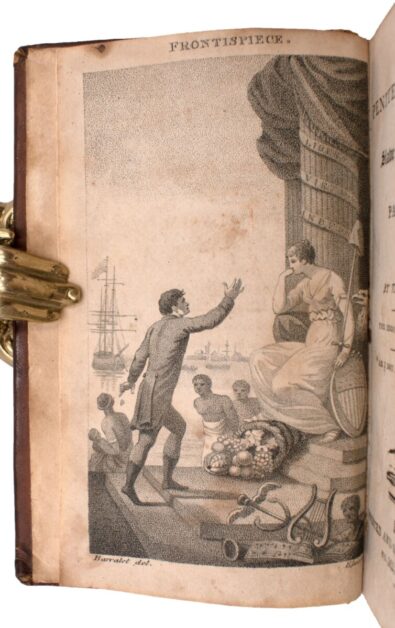
The stipple engraved frontispiece by Barralet depicts a slave trader fecklessly pleading his case before Lady Liberty who looks onto the slaves landing on the shores of America with despair.
Original published in Philadelphia in two cantos, this edition expanded to four, plus the following sections: Notes to The penitential tyrant — Appendix — Messiah: a sacred eclogue, in imitation of Virgil’s Pollio [by Alexander Pope] — Buying stolen goods synonymous with stealing; or, The immorality of using the produce of slavery demonstrated. Addressed to all Christians of all denominations — A subject for conversation and reflection at the tea-table.
Originally published in England [by William Cowper] — The method of procuring slaves on the coast of Africa … Extracted from authentic documents, and exemplified by engravings — Extract from an essay in verse, entitled, Slavery. By Captain Marjoribanks, belonging to a British regiment which was stationed in the West-Indies.
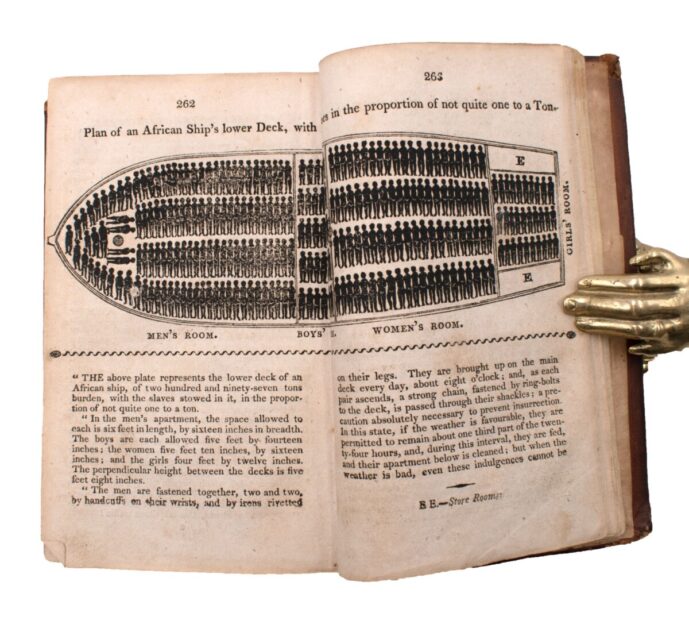
The section titled The method of procuring slaves on the coast of Africa includes a double-page depiction of the plan of slave ship Brook’s lower deck, a provoking symbol of the abolitionist movement, depicting the horrors of the Middle Passage.
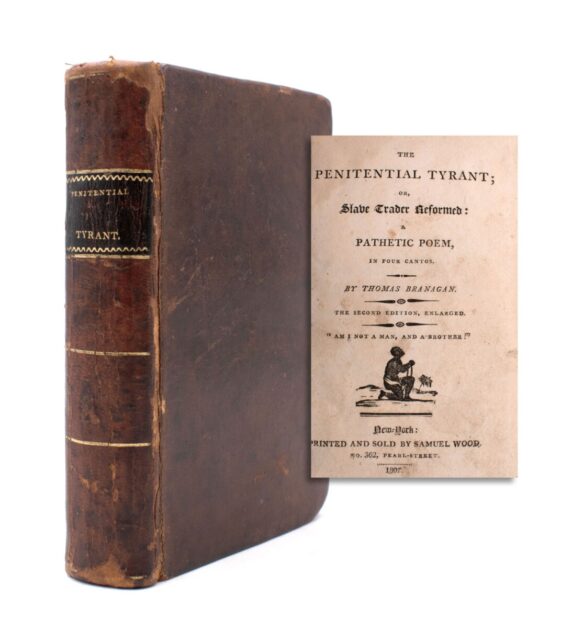
A Pilgrimage to My Motherland: An Account of a Journey Among the Egbas and Yorubas of Central Africa, In 1859-60 / Robert Campbell
An important account of a mid-19th century African-American-led attempt to procure land to return formerly enslaved African-Americans to Africa.
Born free in Jamaica to a white Scottish father and mixed race mother, Robert Campbell apprenticed at a printing shop and later became a teacher in Spanish Town. He emigrated to New York in 1853, eventually becoming a teacher at the Institute of Colored Youth in Philadelphia. In 1858 he joined Martin Delany on his Niger Valley Exploring Party expedition to Africa on behalf of the National Emigration of Colored Men, and published his own account of the experience. The work includes descriptions of Abeokuta, ethnographic material, and the text of the treaty he and Delany negotiated with the king and chiefs of the Egba for the right to establish settlements.
Both Campbell and Delany’s accounts were published by Thomas Hamilton, who Blockson calls “the first Black publisher of importance in America.” The year following its publication, Campbell purchased a cotton gin and printing press and emigrated to Nigeria with his wife and children, hoping to start a colony for African Americans at Lagos. With attention turned to African American participation in the Civil War, the colony did not come to fruition but represents an important moment in black nationalistic thought.
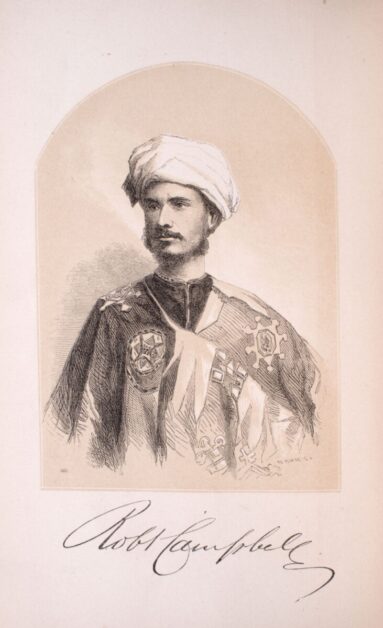
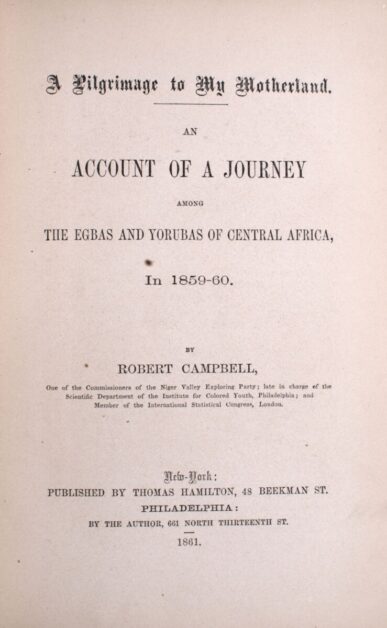
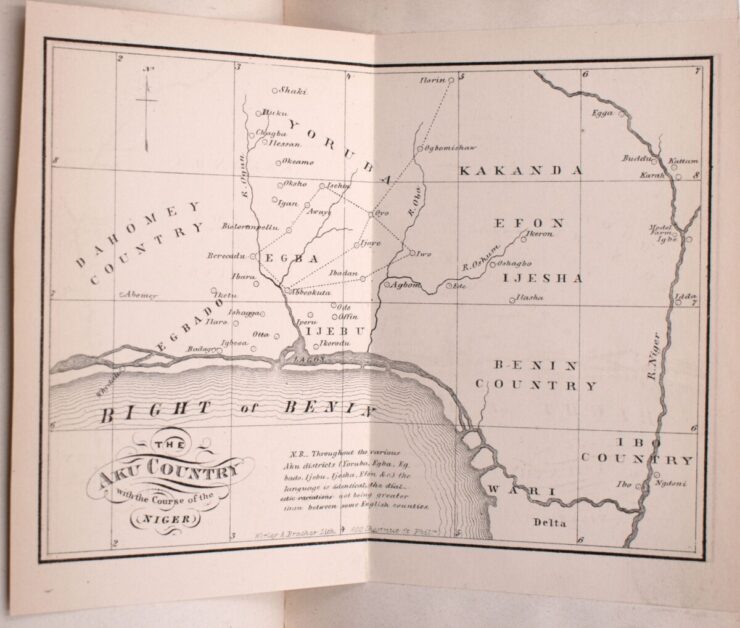
Campbell, Robert. A Pilgrimage to My Motherland: An Account of a Journey Among the Egbas and Yorubas of Central Africa, In 1859-60. New York: Thomas Hamilton; Philadelphia: By the Author, 1861.
Discourses of the ecclesiastical and civil polity of the Jews / Isaac Abendana
Isaac Abendana, the Hebraist and book collector was born in Spain, brother of the celebrated Jacob Abendana, the distinguished Spanish physician and Haham, was taken at an early age to Hamburg, Germany where he completed rabbinical studies and then Leyden, Holland where he studied medicine. After studying in Leyden he came to England in 1662, and secured an academic post at Trinity College, Cambridge. While in Cambridge, and later on in Oxford, he became a significant supplier of Hebrew books. As part of his trading activities he published the Oxford Almanack, otherwise known as The Jewish Kalendar; containing an account of their fasts and festivals, from 1692 to 1699. This work, Discourses of the ecclesiastical and civil polity of the Jews, gathers and expands upon the essays that appear in the Almanacks. During his time in England, Abendana enjoyed a virtual monopoly in Hebrew studies at Oxford and Cambridge. A fine copy, with the contemporary armorial bookplate of the Moray family of Abercairny.
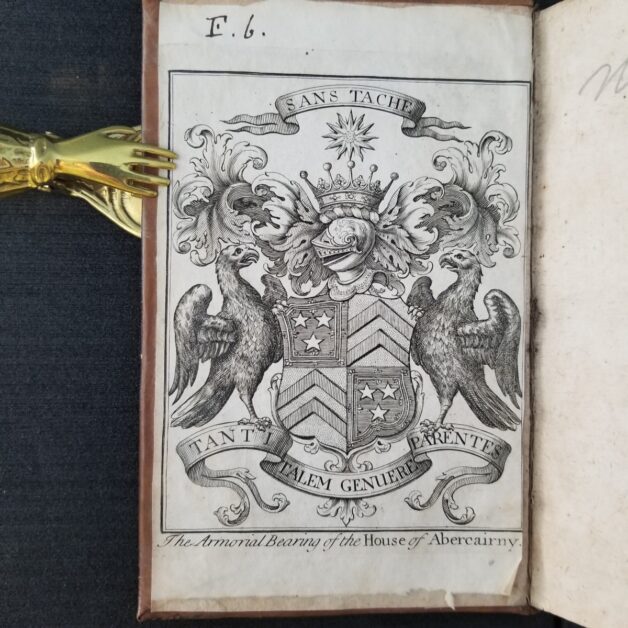
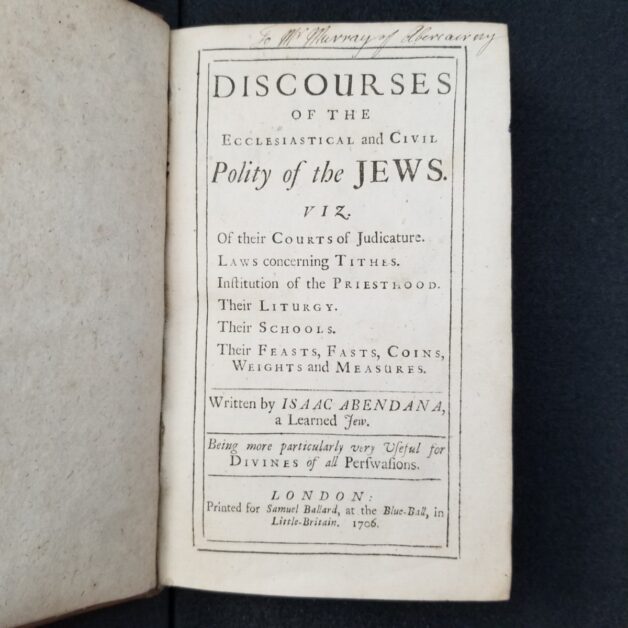
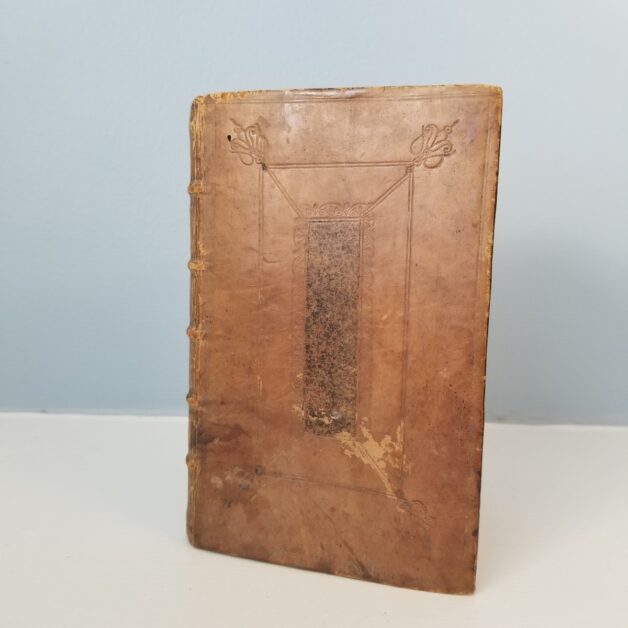
WomanPower : Report No. 136
A scarce publication on the role of women in the workforce during the second world war.
“When Congress declared us a participant in World War One in 1917, women had no vote. Their place in industry was minor. Today, in our first year of World War Two, women not only have a voice in government, but are the labor saviors of the nation’s vital war production program….This development presents new problems to every employer…”
This publication presents a brief history of women in the U.S. workforce and the potential for up to 5 million more entering the workforce by the end of 1943, “Types of Work in Which Women Prove Effective” and those “least Suitable”; “Relative Strength of Women to Men”, dress, job factors and training, “Factory re-Engineering to Accommodate Women Workers”; Supervision of Women in Industry; child care problems, among other topics.
“Music Hath its Charms to Speed Up Women’s Work…An interesting side-light on the capacities of women through musical appeal to their rhythmic senses comes from a 100 per cent woman operated factor, Velvac Inc. … Detroit’s only all-woman factor is engaged in the manufacture of airplane, machine gun, and tank parts. But aside from th prosaic details common to hundreds of plants making similar products, the Velvac factory atmosphere is as feminine as Phil Spitalny’s all-girl orchestra, and almost as musical. … ‘The music keeps the girls from getting bored – and with women, boredom is a worse ‘bogger downer’ than physical fatigue.'”
The George S. May Business Foundation was a non-profit organization devoted to conducting research into problems of business management.
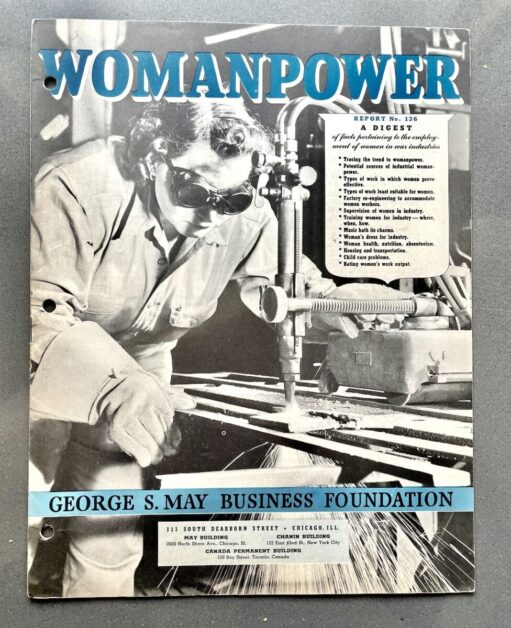
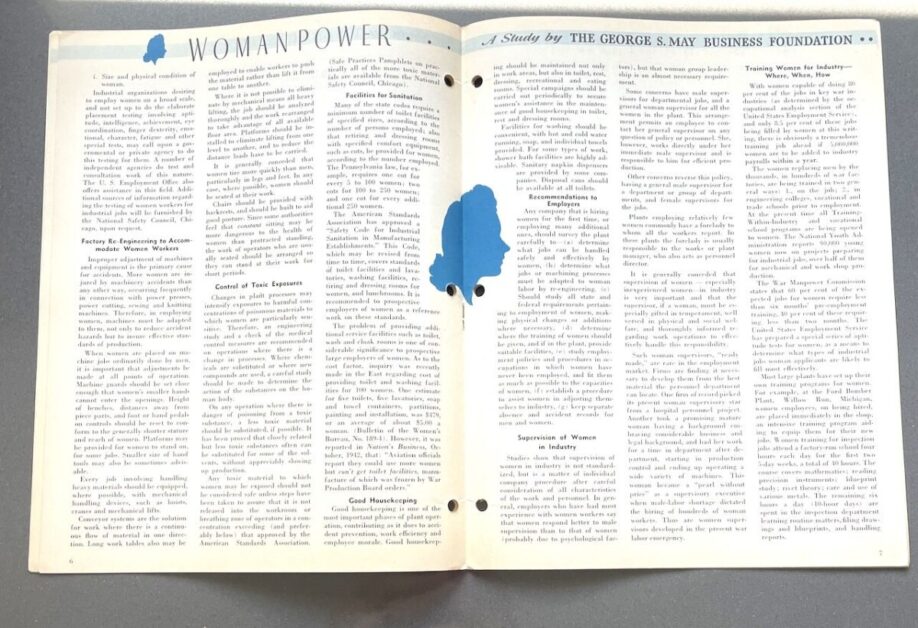
George S. May Business Foundation. WomanPower : Report No. 136. Chicago: George S. May Business Foundation. 1943.
Practical, Warm Hand Knits for Service Men, Make and Mend for Victory; Knit for Victory; Men’s Sweaters at Work and Play
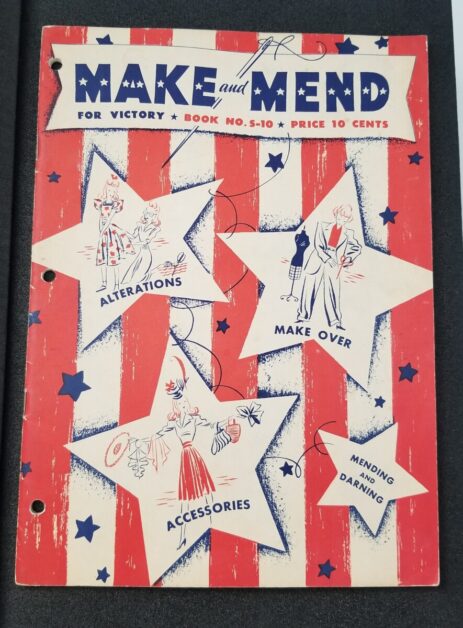
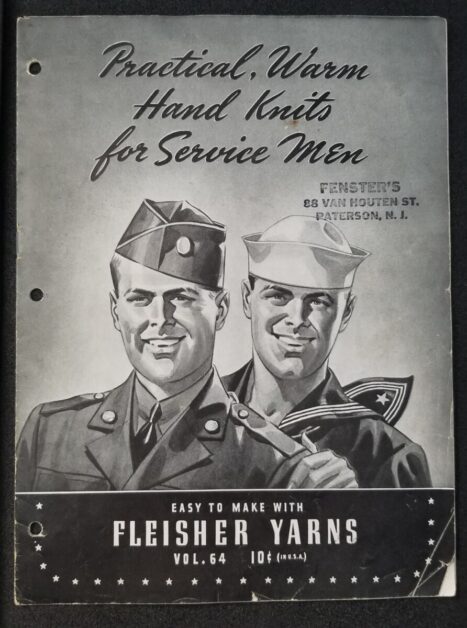
“If your sister Susie’s sewing socks for soldiers, here’s a pack of patterns picked for her perusal: four vintage WW2 guides for thrift and for knitting useful bits of kit, “also practical for air raid or fire warden use”. “
Women’s Barracks / Tereska Torrès
Credited as “the first pulp fiction book published in America to candidly address lesbian relationships”
“This is the story of what happens when scores of young girls live intimately together in a French military barracks. Many of these girls, utterly innocent and inexperienced, met other women who had lived every type of experience. Their problems, their temptations, their fights and failures are those faced by all women who are forced to live together without normal emotional outlets. The girls who chose Tereska Torres, the author, as their confidante poured out to her their most intimate feelings, their secret thoughts. So, this book, with all of its revealment and tenderness, is an important book because it tells a story that had never been truly told–the story of women in war” From the back cover.
Special Collections’ copy is the 1950 first printing of Fawcett’s Gold Medal #132 paperback. The cover art is by Barye Phillips, who was known as the “King of Paperbacks” for his ability to create four cover paintings per week.
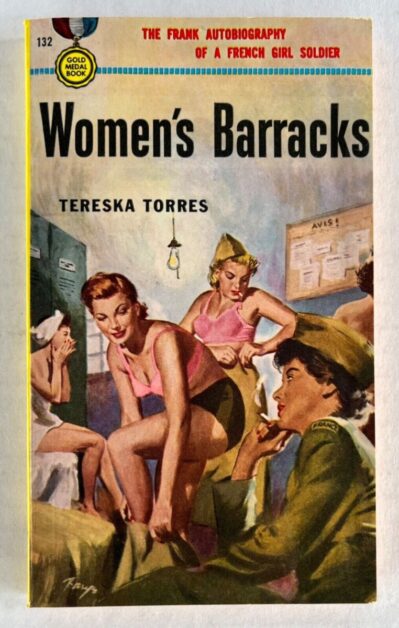
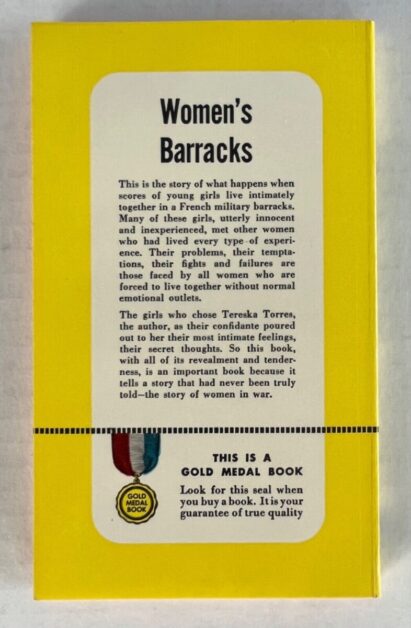
Torrès, Tereska. Women’s Barracks. Translated by George Cummings, Fawcett Publications, 1950.
What does WoMan Want? / Timothy Leary
In 1976, Kurt von Meier wrote of this book:
We may consider Leary’s book a spectacular copying, or retelling, of the Wyf of Bath’s tale, in the context of a rollicking account of the author’s exile in Switzerland, between the Cleaver episode and the capture in Afghanistan, with flashbacks to Milbrook and Harvard, related with exuberance and good humor and imagination that puts to shame the lurid stories that have appeared in the newspapers, in the form of a science-fiction adventure novel. (As a model for his story Leary takes not Chaucer’s version but that of Gower the Scot (=Wanderer), whose hero was King Arthur’s nephew Gawaine, a.k.a. Gowan, or cowan, the rogue mason, not a member of any guild, who learned by himself to cut and pile stone. A nice metaphor for the author’s own public career.)
Special Collection’s copy states an edition of 5000 copies, this is copy number 2159. Inscribed by Leary: “S.M.I.L.E. To George, Timothy Leary. N.Y., N.Y. 8 / 76.”
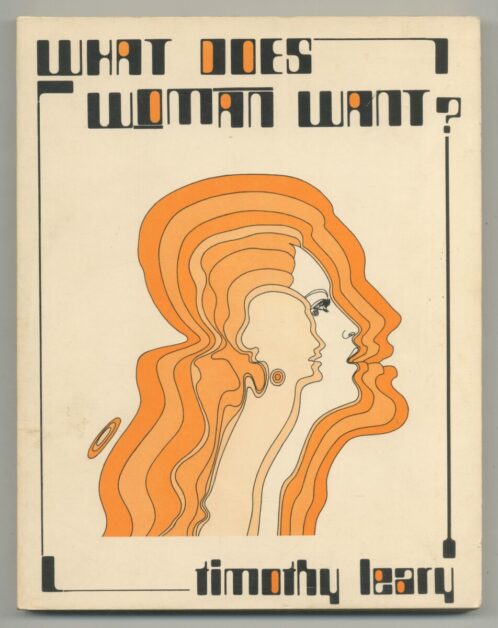
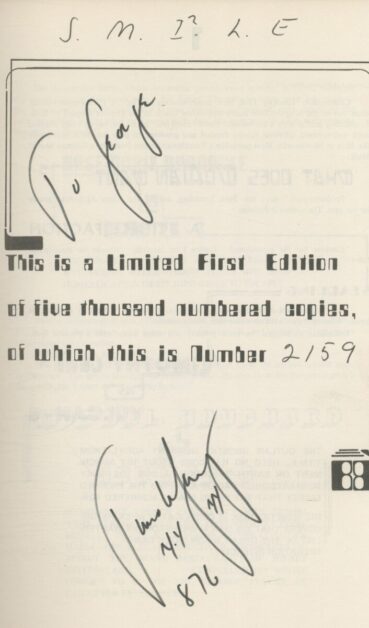
Leary, Timothy. What Does Woman Want. 88 Books, 1976.
The Ladder
First nationally distributed lesbian publication in the United States
Special Collections acquired a run of scattered issues covering the years 1957 – 1968 of this groundbreaking periodical. The Ladder was the primary publication and method of communication for the Daughters of Bilitis, the first lesbian organization in the US.
In 1956, the Daughters of Bilitis wrote their mission statement, which was printed on the inside of every cover of the magazine until 1970:
- Education of the variant…to enable her to understand herself and make her adjustment to society…this to be accomplished by establishing…a library…on the sex deviant theme; by sponsoring public discussions…to be conducted by leading members of the legal psychiatric, religious and other professions; by advocating a mode of behavior and dress acceptable to society.
- Education of the public…leading to an eventual breakdown of erroneous taboos and prejudices…
- Participation in research projects by duly authorized and responsible psychologists, sociologists, and other such experts directed towards further knowledge of the homosexual.
- Investigation of the penal code as it pertain to the homosexual, proposal of changes,…and promotion of these changes through the due process of law in the state legislatures.
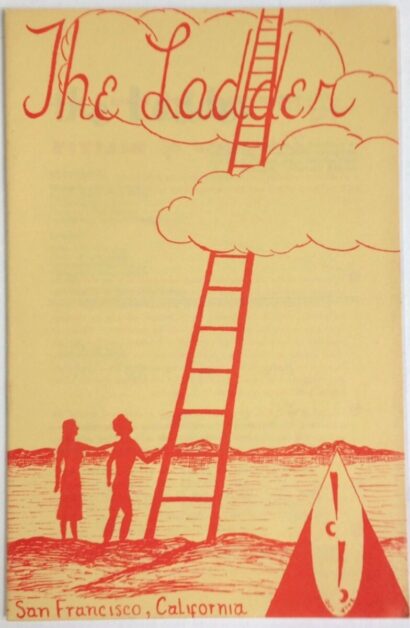
ONE : The Homosexual Viewpoint
The first nationally distributed homosexual periodical
ONE Magazine was a nationally-distributed publication put out by ONE, Incorported, a homophile organization based in Los Angeles. The magazine was published from 1952 to 1967, surviving threats from the police and federal government to provide news, essays, fiction, and more to gay and lesbians across the United States.
Rare Books added issues from 1957 – 1960 which include articles featuring topics such as homosexuals in the military, same-sex marriage, coming out, and discovering community.
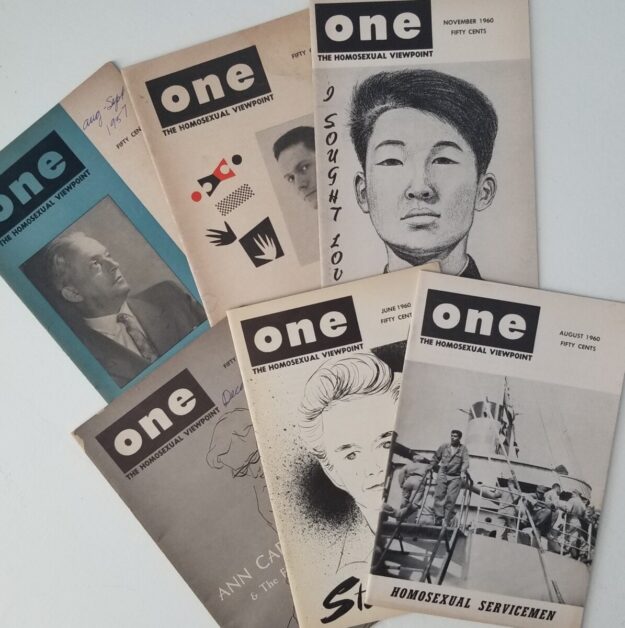
PUNK Magazine
Early music fanizine celebrating the underground punk scene
Punk was founded by cartoonist John Holmstrom, publisher Ged Dunn, and punk enthusiast Legs McNeil in 1975. In addition to celebrating the burgeoning punk scene in New York City, Punk is known for providing an outlet for female and Black writers, artists, and photographers who were often shut out of both the mainstream and underground music publishing opportunities.
Rare Books acquired all 15 issues published between 1976 and 1979, which feature iconic covers of Lou Reed, Iggy Pop, Blondie, The Sex Pistols, Patti Smith, and Ramones among others.
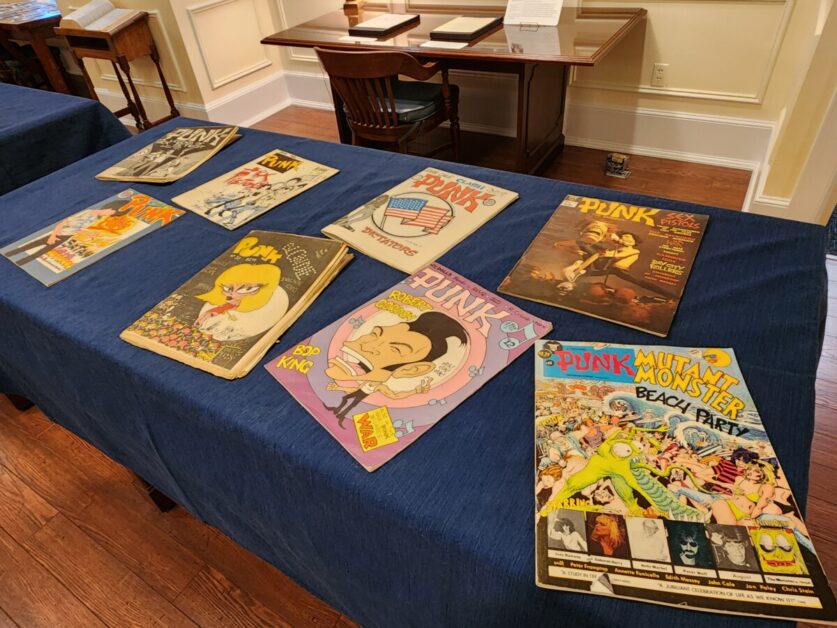
Special Collections
Kathe Kollwitz, March of the Weavers (1893-1897) and The Ploughman (1907)
SCUA recently received the very generous donation of two Kathe Kollwitz etchings from UNCG alumna Betsy Brinson, Ph.D. March of the Weavers (1893-1897) and The Ploughman (1907) are welcome additions to the collection. Born in East Prussia in July 1867, Kathe Schmidt Kollwitz had an early interest in art. She studied in Munich and Berlin, with Max Klinger as a major influence. As her style developed, she moved toward graphic art, producing numerous drawings, etchings, woodcuts, and lithographs. The grief that she experienced because of the loss of her youngest son in World War I, resulted in prevalent themes of mothers and children, poverty, suffering, death, and the stark reality of war. She experienced further tragedy during World War II, when her grandson was killed in action and her life’s work was lost during a bombing attack. She died shortly before the end of the war. Kollwitz is considered one of the last great German Expressionists.
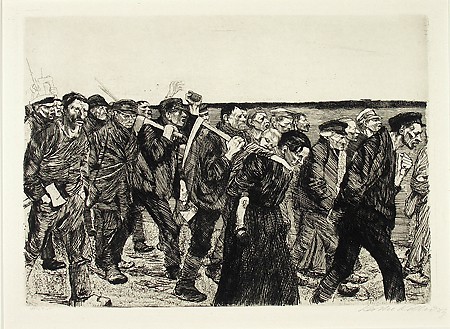
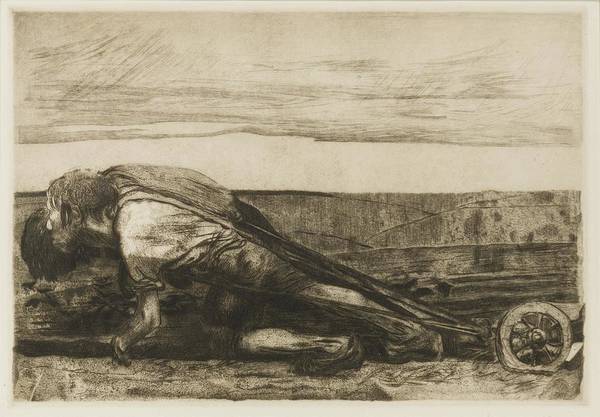
Kodak Brownie Holiday Camera
This Brownie “Holiday” Camera was generously donated by Terry Brandsma, the Information Technology Librarian at the University Libraries, UNCG. Made of Bakelite, the small viewfinder camera is was available in the United States and Canada from 1953 to 1962.

Women Veterans Historical Project
Red Cross Poster
Artist W. Hood created this fundraising poster to support the American Red Cross initiatives to support the armed forces.
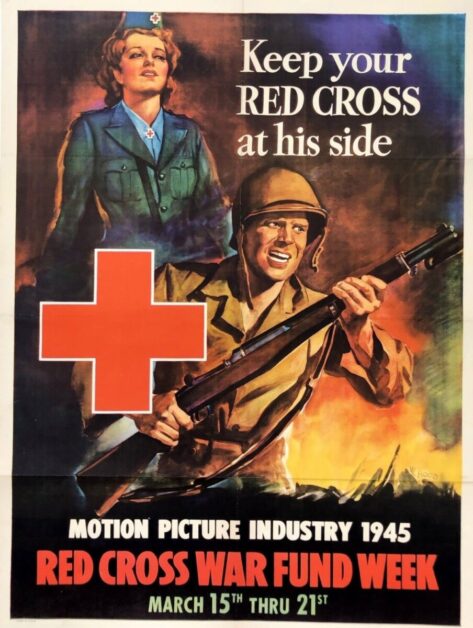
University Archives
UNCG Freshman Beanie
This class beanie, originally owned by Laura Ann Carson (Class of 1964), was recently donated to SCUA, along with a 1964 class jacket. These college-issued beanies were worn by students throughout their freshmen year. In their sophomore year, students were given class jackets, which replaced the beanies. This example is particularly interesting, as it downs not have a specific date, but instead has a “D” and question marks, allowing the same style to be worn in multiple years.
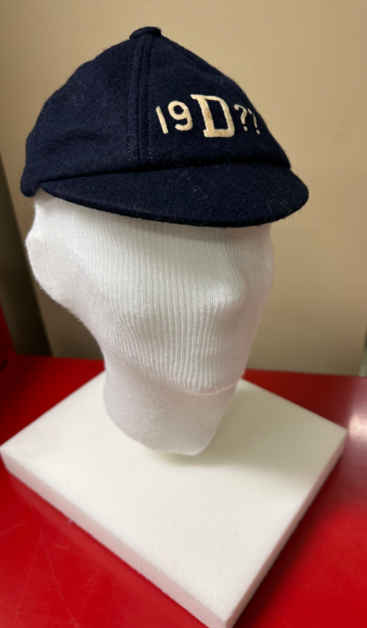
UNCG National Champion Sweatshirt
Beginning in 1970, the men’s soccer team was one of the earliest intercollegiate teams on campus. In 1982, the team captured its first Division III national championship. This victory was repeated in 1982 and 1983 under coach Mike Berticelli. The team went on to be the first NCAA team to win three consecutive national championships from 1985-1987, this time under coach Michael Parker’s direction. In 2004, the soccer team would earn their first No. 1 national ranking since moving to Division I. This sweatshirt was created to celebrate the 1980s victories.
